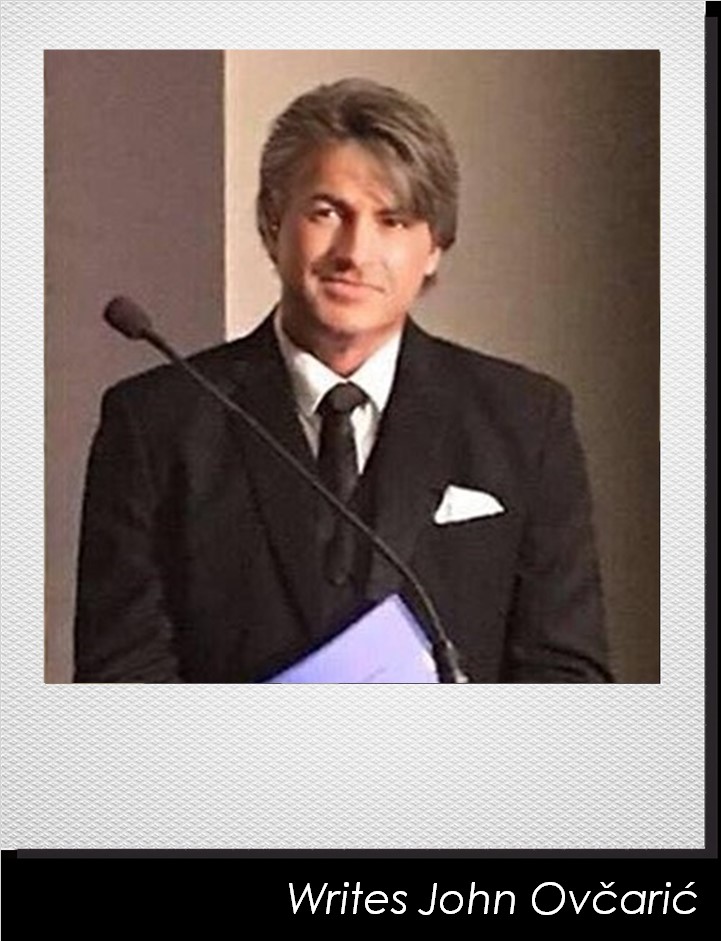
The background to this story was provided by Mate Lubina’s son Stipe Lubina, former Croatian Special Police member and Vukovar defender who today lives with his wife Mara in the Croatia that he and his forefathers fought to liberate.
Much has been written about the battle of Odžak, but what isn’t realised by the masses is the fact that it was the last battle of World War II in Europe having commenced on the 19th of April 1945 and lasting until the 25th of May 1945, 17 days after the end of the war in Europe.
This was the last location where the remaining operational combat troops of the Armed Forces of the Independent State of Croatia (NDH) totaling 11,000 in number and commanded by Petar Rajković, who had decided not to join the exodus of Croat civilians and armed forces from Zagreb, stood their ground against the advancing forces of Broz Tito’s Partisans comprising 35,000 troops of the 25th, 27th and 53rd Partisan divisions commanded by Miloš Zekić.
Originally Tito’s plan was to have had all combatants surrender to his forces by his 53rd birthday on May 7th, but such was the ferocity of fighting, that ultimately Broz Tito, infuriated by the situation, became incensed by the fact that his Partisans were incapable of breaking the defense by that date and delayed his infamous appearance and speech in Ljubljana while his commanders threw everything including newly acquired German captured ME109’s into the fray.
Meanwhile, the defensive lines commanded by Rajković, with his combined forces officially outnumbered 3:1 yet potentially by 6:1 based on eyewitness testimony, had one simple directive to his troops even in consideration of their impressive preparations of a network of defensive trenches and depleting levels of ammunition.
“Allow the enemy to storm us, refrain from firing until they are within 2 meters of our lines, and then face those that had not succumb to our volley of bullets in arm-to-arm combat”
1 month and 6 days after it began, the remaining Croat troops which had dwindled to half their original number finally surrendered, Tito appeared later than anticipated in Ljubljana the following day on the 26th of May 1945 still outraged but outfitted in a fine new tailored uniform which would become his hallmark and which was most probably sewn by the finest Croatian tailors in Zagreb who had had ample time to dress swine in fine silk apparel.
Even though he wasn’t about to let anyone rain on his parade again, it seems the good Lord God had other ideas and sent the rains in saturating him and his new fantasy costume during his speech.
In his speech he proclaimed
“Regarding the traitors who found themselves inside of our country, members of different nations, that is a thing of the past. The hand of justice of our peoples exacted revenge on the majority of them”
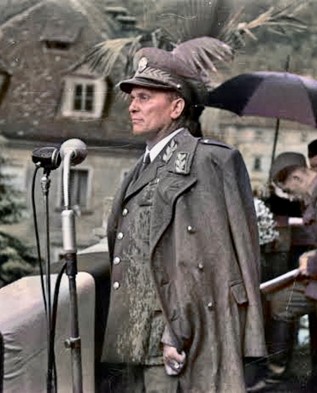
Broz Tito : Ljubljana May 26th 1945
The Croatian forces that stood their ground at Odžak included
One battalion from Slavonia,
One company from Imoča,
One company of German troops that remained in Croatia after the German surrender.
One Home Guard battalion consisting of mainly locals from surrounding villages.
One specialised Battalion of 1000 Ustaše Baje Petra,
The Ustaše Battalion Ibrahim Pjanič and Avdaga Hasič
And the remainder regular soldiers commanded by Ivan Rajkovačić and Ivan Čalušić.
Official available records state the Partizans numbered 35,000, Mato testified that their forces actually numbered 62,000 thousand comprising both Partisans and Chetniks the latter of which had capitulated and entered the Partizan ranks.
Mato went on to testify that while the battle had started on the 19th of April 1945, the decision to defend the Odžak position rather than retreat to Zagreb was made a month earlier in March 1945 at which time massive works were undertaken by the troops to fortify their positions, create a network of long stretching trenches and strategic firing positions all of which eventually presented to hard a task for Tito’s forces to overcome.
In reality, this was actually a 2 ½ month campaign and the victors extracted their revenge on the population in the area with the murder of mostly 10,111 civilians from areas stretching from Derventa to Bosanski Šamac.
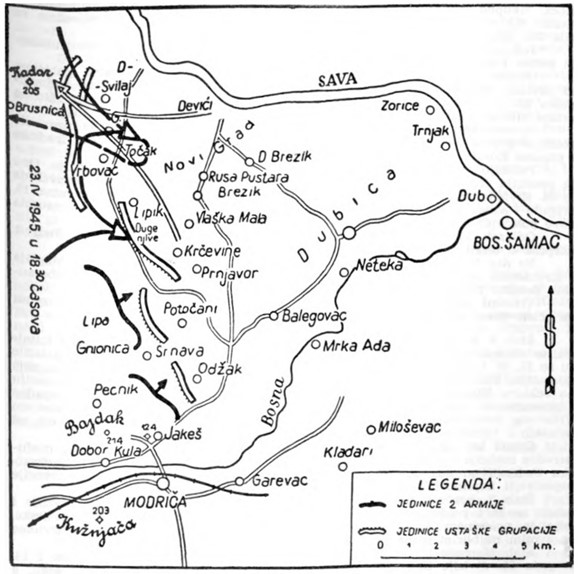
State of play in the battle of Odžak at 18:00 hours on the 23rd of April 1945.
The Lubina Brothers.
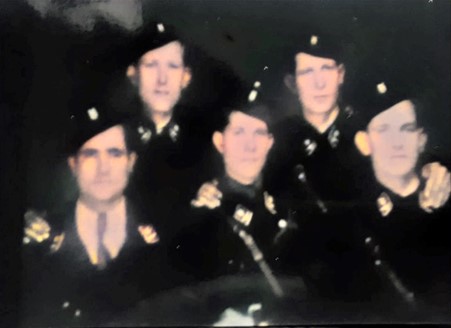
From left to right brothers: Marijan Lubina, Ivan Lubina, Pejo Lubina, Stipo Lubina, and Mato Lubina.
The combatants at the battle of Odžak comprised remnants of numerous Croatian Divisions and military cores, in November 1944 all Croatian forces were reorganized into what was to become a unified military core named “Hrvatske Oružane Snage (HOS)” in addition to the 15,000 odd Croat combatants were also some 1,000 remnant Chetnik combatants who had no means of safely reaching their comrades already in Austria and Italy and decided to seek protection from the Croats as they were being hunted by the Partisans.
5 brothers from the family Lubina were among the now assembled HOS forces, and the Chetniks must have soiled themselves when they saw them for these brothers were not regular members of the Croatian armed forces, but rather Black Legionnaires who had continuously extracted justice on the Chetnik forces for their atrocities over the preceding 4 years of conflict.
Marijan, Pejo, Mato, Ivan and Stipo Lubina presented a striking sight that would rival any Hugo Boss advertisement in their black uniforms, uniforms as dark as a midnight sky in contrast to the grey and khaki uniforms of their HOS comrades and in total contrast to the greenery of the battle scene they found themselves in. They would have presented as trophy targets to the attacking Partisans.
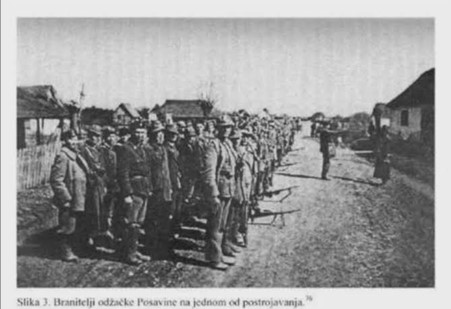
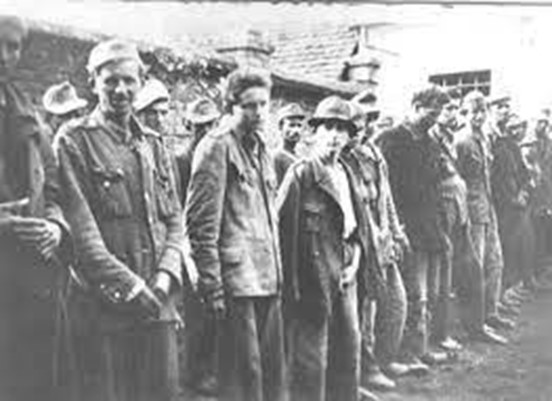
Croatian prisoners taken after the battle; these men most probably didn’t live to see sunset.
Marijan Lubina was born in 1909 and was aged 36 at the time of the battle, he was killed Novi Grad near Odžak in May 1945
Pejo was born in 1912 and was aged 33 at the time of the battle, he initially survived the battle but was killed in 1948 after being captured near Nova Gradiška as a crusader (Krizar). The day he was captured he was executed at the third camp of Stara Gradiška.
Stipo, born in 1921, and aged 24 at the time of the battle survived the battle and in 1948 along with 25 others, including Odžak’s Commander and Croatian Knight, Petar Rajkovacic, made their way secretly via Hungary to Germany. In 72, he eventually made his way to the United States.
Mato was born in 1913 and was aged 32 at the time of the battle, initially he was interned at the second camp in Brčko and after one and a half months was released along with other prisoners. However, while on his way home he learnt that as each of the released prisoners arrived home assassination squads lay in waiting murdering each of them before they could cross the threshold of their homes.
Learning the fate of their comrades, Mato along with numerous others made their way to Slavonia instead.
Mato eventually joined the (Krizari) crusaders near Donji Andrijevac where he remained in defiance until 1947 when on assignment to gather food and supplies in Stare Perkovci, he learnt that his group had been surrounded and killed by KNOJ operatives.
He was hidden by the people of Perkov who initially hid him before dressing him in a partisan attire and forged him a military identity card. He took on work and was employed as a railway worker eventually passing away in 1995 at the age of 83 in Donji Andrijevci.
He had survived to welcome back an Independent and triumphant Croatia again; he had 4 sons all of which served in the homeland war and its independence but at great cost with the loss of his son Mijo aged 45 in 1992 during combat in Donji Hasic.
His son Stipo, born in 1956 was a member of the Croatian Special Police (MUP) and the 3rd Guards Brigade “Kune” (3. gardijska brigada “Kune”) 3.pb “KOBRE” Slavonski Brod survived the war and retired from the military in 1998 with an invalid status.
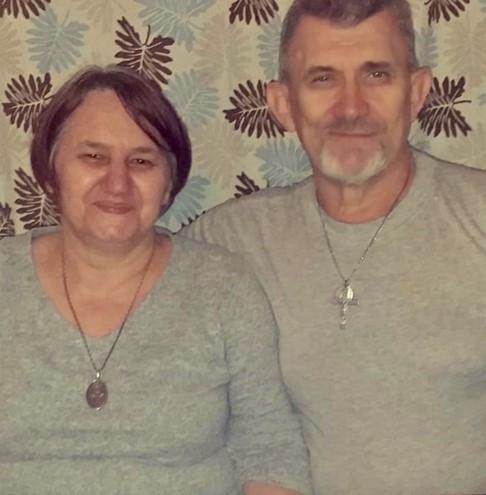
Stipe Lubina and his wife Mara.
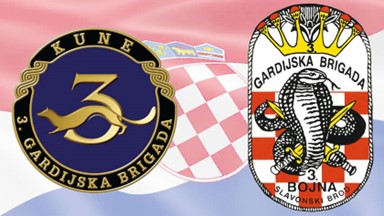
His son Josip, born in 1958, a member of the armored railway battalion, retired from the Railways in 2010.
Mato, born in 1963, was a member of the Special Police, Šimini Anđeli Pakla, Slavonski Brod, and is a proud veteran and defender of Vukovar.
The Lubina story is one of thousands, the majority of which are unknown, have passed into legend, or have been lost with the passing of generations, luckily their story lives on and helps expand our knowledge of how the Croatian spirit surpasses time and rises to the call of its nation and people time and time again.
In 1995, Mato Lubina senior, father of Stipo was posthumously awarded the “Vojnički red trolista s križem kneza Višeslava” (The Military order of the trefoil with the cross of Prince Višeslav) in honor of his service to his nation during WW2 which was accepted by Stipo.
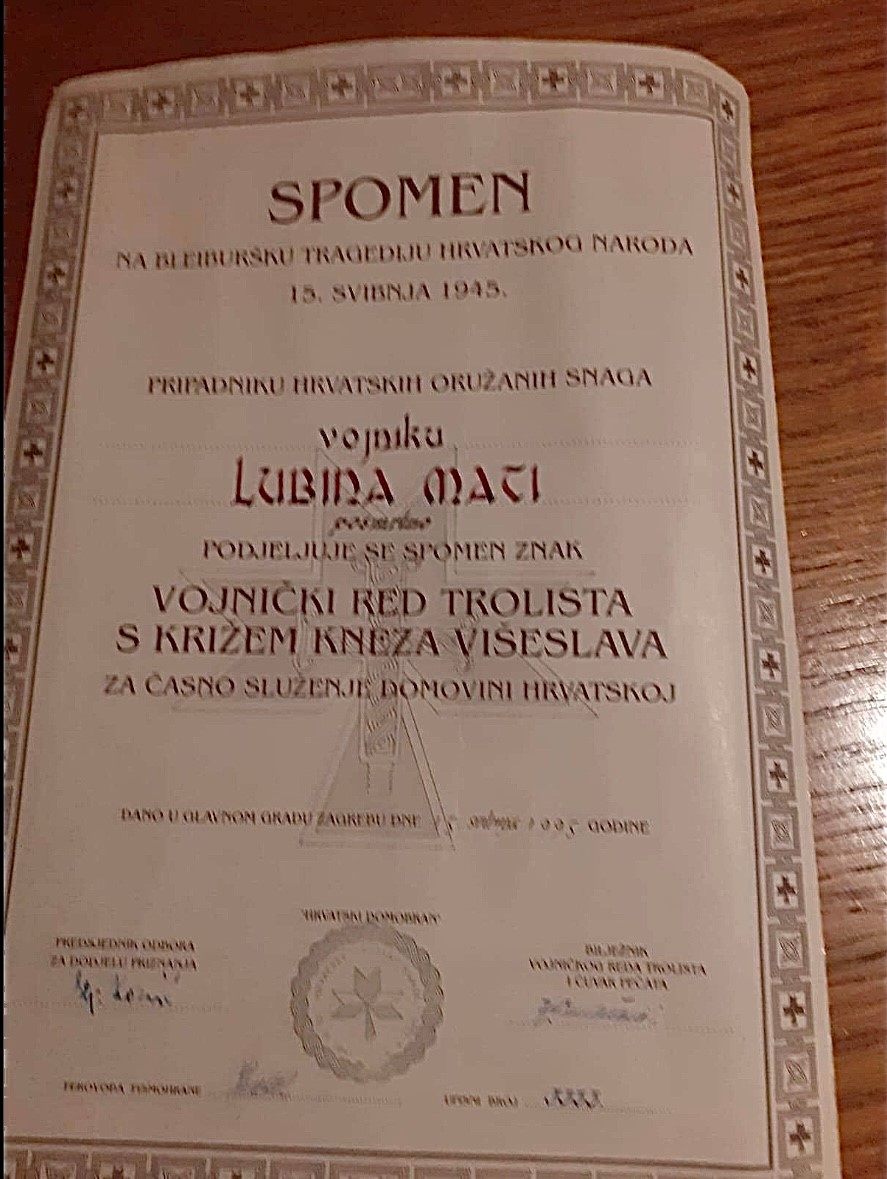
The Odžak patriots gave Tito a birthday gift he never forget, they gave us a legend and legacy which will never be forgotten.
May they all rest in peace.